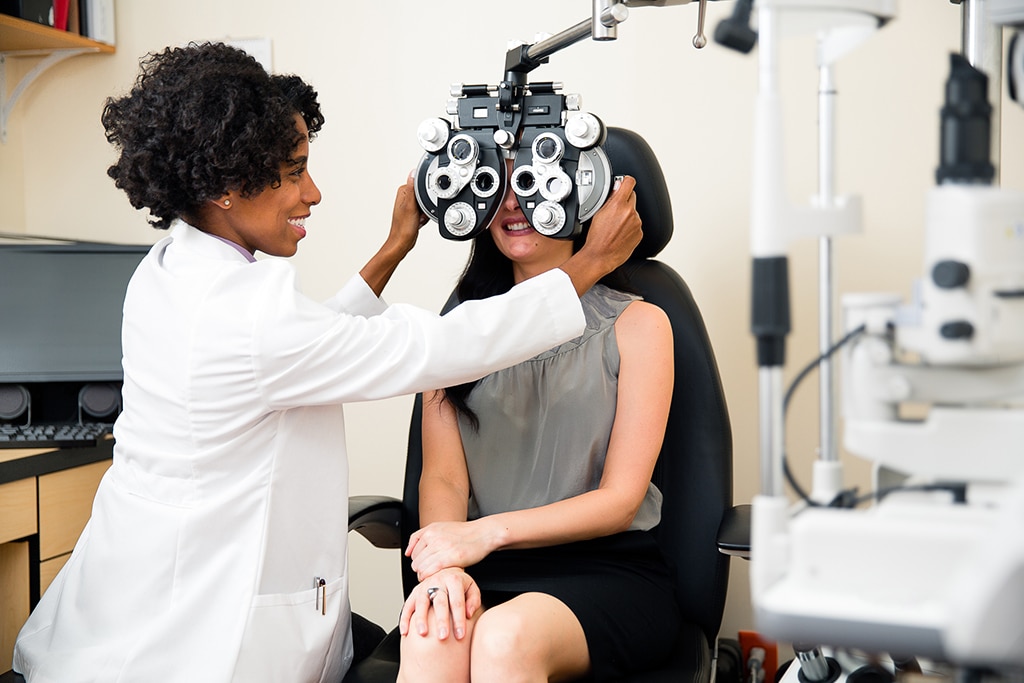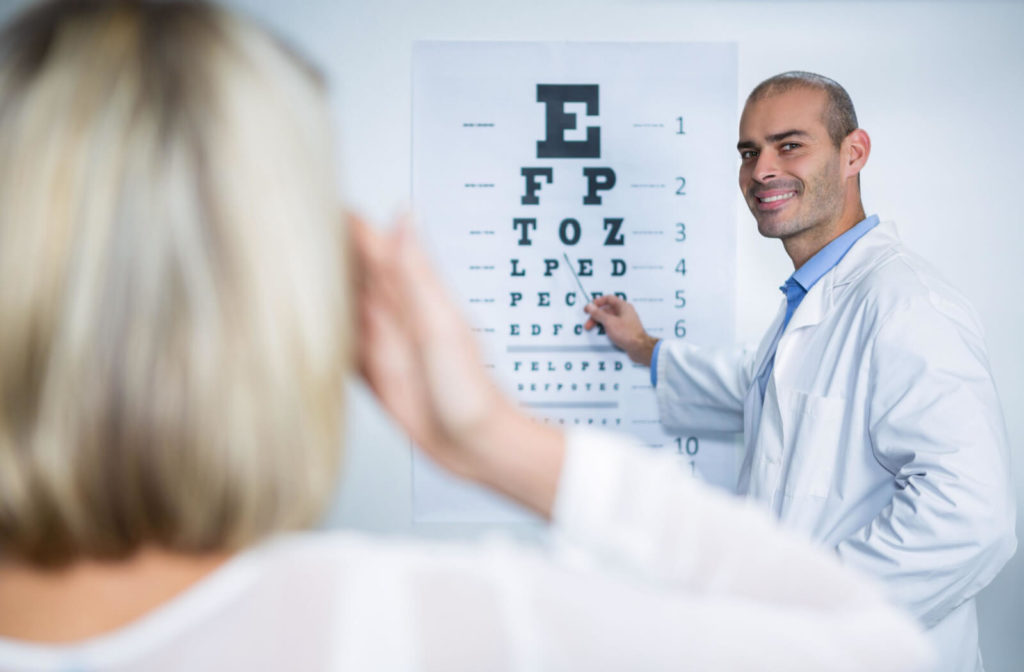Comprehending the Role of Your Eye Doctor in Maintaining Vision
Comprehending the Role of Your Eye Doctor in Maintaining Vision
Blog Article
Exploring the Newest Technical Innovations in Optometry and What They Mean for Optometrists
From the accuracy of Optical Coherence Tomography to the nuanced understandings offered by AI-driven analysis tools, these innovations are establishing brand-new criteria in patient analysis and therapy. As these advancements permeate the method, optometrists are faced with the difficulty of accepting these tools to improve individual results.
Advancements in Diagnostic Equipment
Progressing the field of optometry, advancements in diagnostic devices have transformed the means eye care specialists evaluate and diagnose ocular conditions and aesthetic problems. The previous years has observed significant technological innovations, allowing more exact and comprehensive assessments. Optical Comprehensibility Tomography (OCT), for instance, supplies high-resolution cross-sectional photos of the retina, enabling the very early detection of conditions such as glaucoma and age-related macular degeneration. This non-invasive imaging technique has actually ended up being indispensable in contemporary optometric technique.
An additional secret advancement is the intro of sophisticated corneal topography systems, which map the surface curvature of the cornea with accuracy. These devices are specifically useful for fitting call lenses and detecting corneal conditions. Electronic retinal imaging has actually transformed conventional ophthalmoscopy, supplying comprehensive, breathtaking sights of the retina that promote extensive aesthetic examinations.
The development of wavefront aberrometry has additionally been essential, making it possible for the analysis of refractive errors with unrivaled accuracy (Opticore Optometry). This innovation aids in personalizing rehabilitative lenses and enhancing medical results for refractive surgeries. Collectively, these diagnostic developments encourage eye doctors to provide remarkable individual care, ensuring very early intervention and customized therapy methods, ultimately boosting aesthetic wellness outcomes
AI in Person Administration
Building on the foundation of advanced analysis devices, the incorporation of artificial intelligence (AI) in client management represents a transformative jump for optometry. AI systems are progressively used to boost efficiency, precision, and customization in individual treatment.
Furthermore, AI-driven systems facilitate streamlined client communications and management processes. Automated organizing, digital appointments, and customized follow-up plans not only enhance person contentment but additionally maximize time monitoring for professionals. These systems can triage people based upon the urgency of their conditions, guaranteeing that those in vital demand obtain timely focus.
Additionally, AI improves decision-making by supplying eye doctors with evidence-based recommendations and therapy paths. By integrating data from digital wellness documents, AI tools supply understandings that notify clinical decisions, decreasing the danger of errors and enhancing patient results. As AI proceeds to progress, its function in client administration will likely expand, improving the landscape of optometric treatment.
Breakthroughs in Retinal Imaging
In the realm of optometry, retinal imaging has experienced remarkable technological improvements that are boosting diagnostic capacities and patient treatment. Technologies such as Optical Coherence Tomography (OCT) and fundus digital photography have revolutionized how eye doctors envision and analyze the retina.
Improved imaging techniques like OCT angiography are additional refining analysis accuracy. Optometrist Chino. Such advancements facilitate the recognition of minute retinal changes that can symbolize illness progression.
In addition, developments in expert system are boosting retinal imaging by enabling automatic evaluation of huge datasets. These systems help eye doctors in determining patterns a sign of pathology, thus boosting diagnostic accuracy and efficiency. Collectively, these advancements are changing retinal imaging right into a foundation of modern eye treatment, improving end results and broadening therapeutic possibilities.
Teleoptometry's Growing Duty
Teleoptometry is increasingly ending up being a crucial component of eye care, driven by developments in electronic interaction and analysis devices. This is specifically advantageous in underserved and rural areas where access to specialized eye treatment is frequently restricted.
The assimilation of man-made intelligence (AI) further boosts teleoptometry, allowing the evaluation of aesthetic data and helping in the discovery of ocular problems such as glaucoma and diabetic person retinopathy. AI-powered algorithms can rapidly interpret complicated imaging information, supplying eye doctors with beneficial insights that bolster scientific decision-making.
Moreover, teleoptometry sustains continuity of care via seamless combination with digital health documents (EHRs), enabling eye doctors to keep extensive person histories. When consulting with different professionals., this guarantees that individuals receive consistent and tailored care even.
Regardless of these advantages, challenges continue to be, including making sure data safety and security and taking care of person expectations. Teleoptometry represents a substantial stride towards even more available, reliable, and patient-centered eye treatment. As modern technology progresses, its duty is poised to broaden better.

Future Fads in Eye Treatment
A myriad of innovative patterns is set to improve the future of eye care, driven by technological innovations and the advancing needs of individuals. One significant fad is the integration of expert system (AI) in diagnostics, which guarantees to enhance the accuracy and performance from this source of eye examinations. AI algorithms can evaluate vast amounts of information from retinal images, possibly discovering conditions like diabetic retinopathy and glaucoma earlier than traditional methods.
Furthermore, personalized medicine is gaining traction in optometry, with genetic screening notifying customized therapy plans. This strategy aims to optimize individual outcomes by tailoring interventions to individual hereditary accounts. Wearable modern technology, such as wise contact lenses, is additionally on the horizon, supplying real-time surveillance of intraocular stress or glucose levels, therefore supplying continuous understandings right into ocular and systemic health and wellness.
The fostering of augmented fact (AR) and virtual reality (VIRTUAL REALITY) in training and client education is one more arising pattern. These modern technologies provide immersive experiences that can boost understanding and abilities both for people and optometrists. As these trends progress, eye doctors should remain abreast of technological advancements to give sophisticated treatment, making sure improved person results and complete satisfaction in the dynamic landscape of eye treatment.
Final Thought

Jointly, these analysis advancements empower eye doctors to supply exceptional patient treatment, guaranteeing early intervention and customized treatment techniques, inevitably enhancing visual health end results.

As these modern technologies continue to develop, optometrists must adapt and integrate them into method, inevitably enhancing process effectiveness and boosting the standard of eye care delivered to individuals.
Report this page